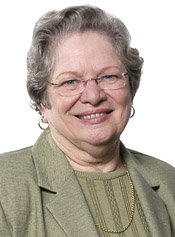 More conference notes! This was a fascinating session about Horowitz. During this session, we also had the privilege of hearing the World Premiere of a Ballade that Horowitz wrote, performed by Louis Nagel!
More conference notes! This was a fascinating session about Horowitz. During this session, we also had the privilege of hearing the World Premiere of a Ballade that Horowitz wrote, performed by Louis Nagel!
The Unknown Horowitz: New Insights into the Man & his Music, by Sherrill Martin. Th @ 3:30pm.
Horowitz studied piano with his mother and then later at the Kiev Conservatory. In 1914, he played for Scriabin (just a year before Scriabin died), and Scriabin’s advice to Horowitz’ father was to be sure he gets exposed to lots of music, and knows literature and art. Horowitz was very introverted and terrified of performing at this point. He wanted to be a composer and had no idea that he was a better-than-average pianist.
The Russian Revolution caused much pain and tragedy for Horowitz’ family. In just 24 hours, the family lost everything and was forced to move. The communists stole everything and tossed their piano out the window. Horowitz’ father was arrested four times for being anti-SS and eventually died in prison. His two brothers suffered from similarly tragic deaths. When the family needed money, Horowitz was able to successful organize concerts to raise money. Unlike many biographers state, Horowitz was born in 1903, not 1904. It is believed that Horowitz’ father lied about Horowitz’ birth year so that his son could evade Russian army recruitment. Eventually, Horowitz was able to escape the repression under the pretense of taking lessons in Berlin. There, he was able to earn $500 to sneak back past the border to his family. He never saw his family again and did not return to Russia until 61 years later.
He took Europe in a storm, and in 1928 gave a U.S. debut. When Rachmaninoff heard Horowitz play his 3rd concerto, Rachmaninoff himself never played it again. Horowitz gave over 100 concerts each year in the U.S.
In 1933, he married the composer Toscanini’s daughter, Wanda. Their only child, Sonya, was born a year later.
In 1936, Horowitz crashed emotionally and took a break from performing until 1939, when he performed a Brahms Concerto with Toscanini conducting. Horowitz is remembered for his unique pedal technique and his ability to achieve unique tone colors.
Horowitz later suffered another breakdown and did not concertize for 12 years this time. He felt that he had ended up far from his destination. He felt like a juggler or a “superman of the piano.” He did, however, continue to research and make recordings. When he reemerged giving a performance at Carnegie Hall, tickets sold out instantly and there was a long line of people who never made it inside. When Horowitz and his wife heard about the long lines, they bought donuts and coffee for them all. And he later invited 200 students to his apartment for a private concert.
His third retirement lasted from 1969-1974. In 1975, his daughter Sonya was found dead in her Geneva apartment. He was so devastated that he could not even attend her funeral. His health declined. He gave some poor performances in Japan — he was possibly overmedicated.
The years 1985-1989 are known as Horowitz’ “Transformation and Transfiguration” years. He returned to Moscow and gave concerts there. He gave his last recording in 1989, the same year of his death. He suffered from a heart attack on November 4 at age 86.
Horowitz was honored as a U.S. Ambassador of Peace from President Reagan and the Russian president as part of his concerts in Moscow. In addition, he was awarded 27 Grammys during his life.

